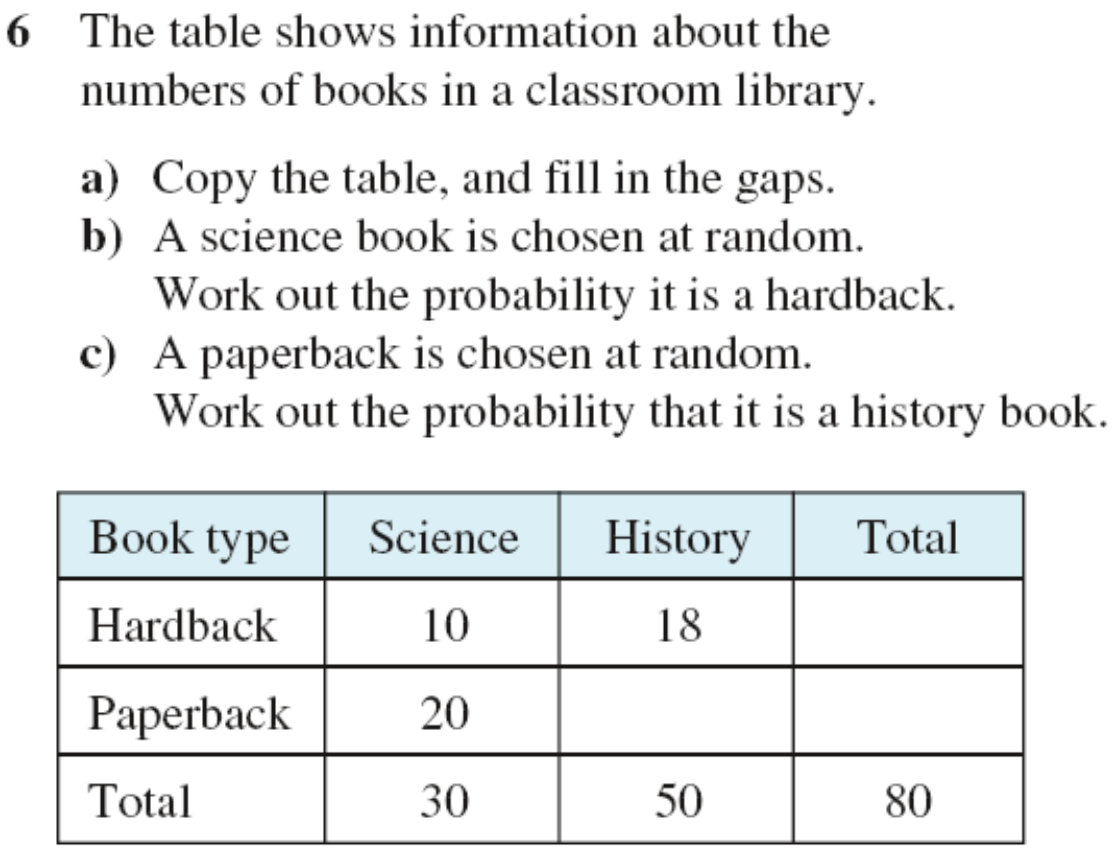To view this page ensure that Adobe Flash Player version 11.1.0 or greater is installed.










Theoretical and experimental probability
Mutually exclusive outcomes
Independent events
Tree diagrams
If an experiment has a number of different outcomes, you can use theoretical probability to describe how likely the different outcomes are. Probability is a number between 0 and 1, with 0 indicating that something is impossible, and 1 that it is certain.

The whole numbers 1 to 10 are written on ten slips of paper, which are then folded and placed in a hat. One slip is removed at random. Find the probability that it is:
a) 6 b) at least 8 c) 12
When you conduct a probability experiment, or trial, then a particular result, A say, must either happen or not happen. So P(A does happen)P(A does not happen)1. This leads to a very useful principle that: P(A does not happen)+P(A does happen)
A drawing pin is thrown in the air 20 times. It lands point up 13 times and point down 7 times. a) Calculate the experimental probability that a single throw results in the pin landing point up. b) The pin is then thrown 300 times. Work out an estimate for the number of times that the pin will land point down.
The table shows the number of boys and girls in Years 7, 8 and 9 at a local school.

a) Find the probability that a randomly chosen member of Year 8 is a boy. b) Find the probability that a randomly chosen boy is a member of Year 8. c) Find the probability that a randomly chosen member of the school is a Year 8 boy.




PROBABILITIES